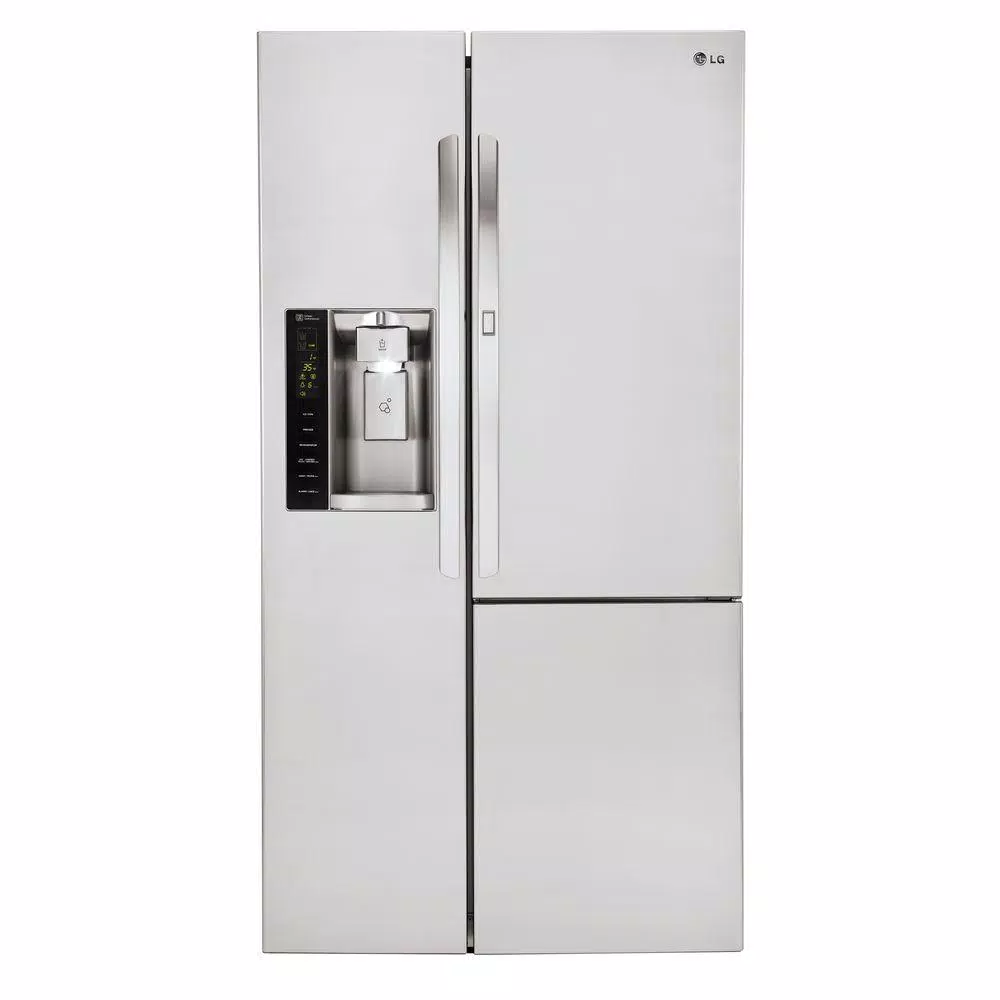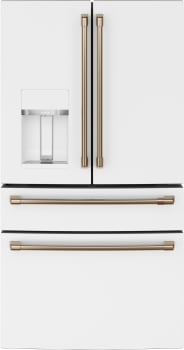GE Profile PVD28BYNFS 36 Inch Fingerprint Resistant Stainless Steel French Door Refrigerator – 951993178
Door in Door With Rotating Door Bin : Easily store and access your favorites, including taller items like re-corked wine bottles, with an innovative door in door design and convenient rotating bin.
This 36 4-door french door refrigerator by GE Profile has 27.6 cu. ft. total capacity and features LED light tower, built-in Wi-Fi, TwinChill evaporators, and is Energy Star Certified.
- Door in Door With Rotating Door Bin : Easily store and access your favorites, including taller items like re-corked wine bottles, with an innovative door in door design and convenient rotating bin
- Adjustable Temperature Drawer With Bin Caddy : Enjoy more storage flexibility and better organization with a removable bin caddy that’s perfect for storing canned drinks and more
- LED Light Tower : Find even the smallest items easily with an entire back wall of LEDs that illuminate your entire refrigerator with crisp, white light
- Built-in WiFi : Accidentally leave the door open? Not to worry! Receive an alert on your smart device any time your refrigerator’s internal temperature drops
- Fingerprint Resistant : Easily wipe away smudges and fingerprints for a look that’s always sparkling clean
- TwinChill? Evaporators : Separate climates in the fresh food and freezer sections help keep foods fresh
Additional information
| Model | PVD28BYNFS |
|---|






by Viclynn
LOVE my frig! The door in door is so handy and the freezer is nice and big. Just wish I had easier access to ice and the and more ice could be stored
by John
Expensive but worth it. Tons of room. Excellent temperature control – especially like the ability to separately set the temp in the center drawer. The backlighting is a stroke of genius – love the way the entire interior glows instead of one measly light in the ceiling of the fridge. One of the huge weak spots in most refrigerators is the in-door ice maker – ALWAYS a headache. Not in this refrigerator – the ice maker keeps up with demand and never jams – a real pleasure to use. So much more to love about this appliance!
by Gordon
We switched from a Samsung fridge that only gave us problems to this GE fridge that has been a godsend.
by Eva
I liked all the great features and appearance of the Refrigerator.
by Enes
It has a lot of very nice features when creature comfort’s. I love the middle drawer especially when entertaining.
by Smash
Extra doors, extra drawers works very well for us.
by Cyndy
this is my first .water/ icemaker in a door and I love it I’ve had no problems with this refrigerator. It looks great too! I really love the wall of lights and the way the water/ ice maker automatically lights up when I walk up to it at night. Can get a drink without turning on lights. I would recommend this product to any one.
by Leasea
This fridge is a workhorse. I keep placing things in there and it never looks crowded. The depth is amazing. It is keeping my fruits and veggies much longer.
by Thomas
This refrigerator holds my weekly 6 bottles of kombucha, champagne, 2 cashew milks, and all my produce, and everything else! It’s a huge refrigerator! I love my flex drawer in the middle! Big freezer! Love this refrigerator! Thank you!
by Jim
Product is new age and great product. Appearance is wonderful.